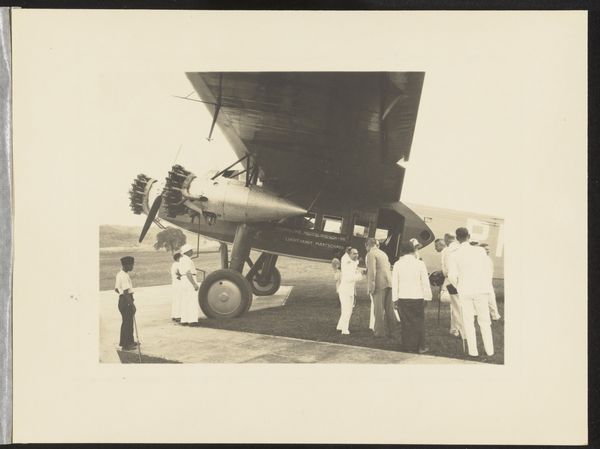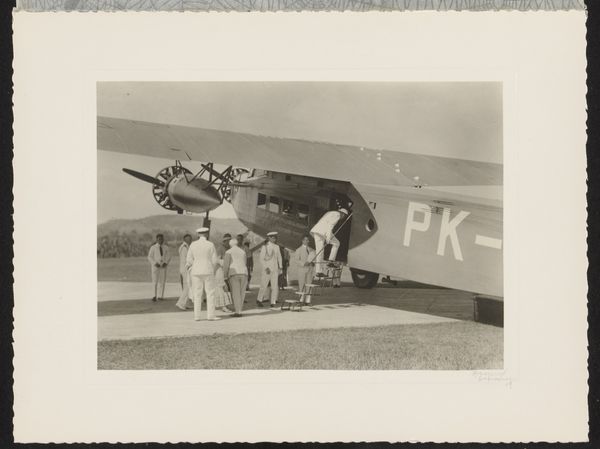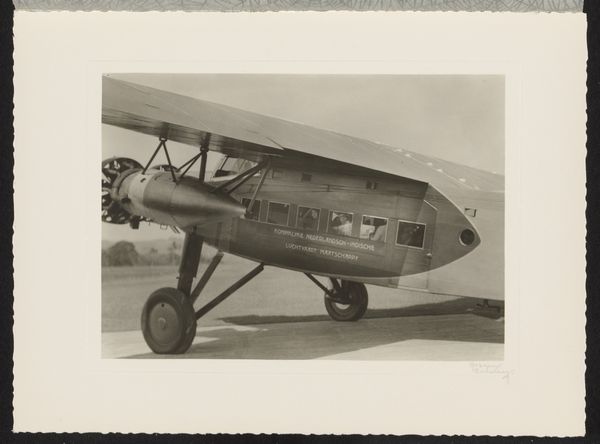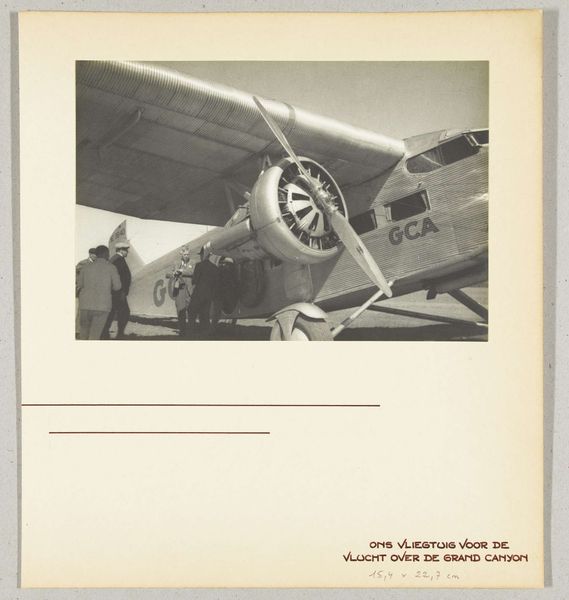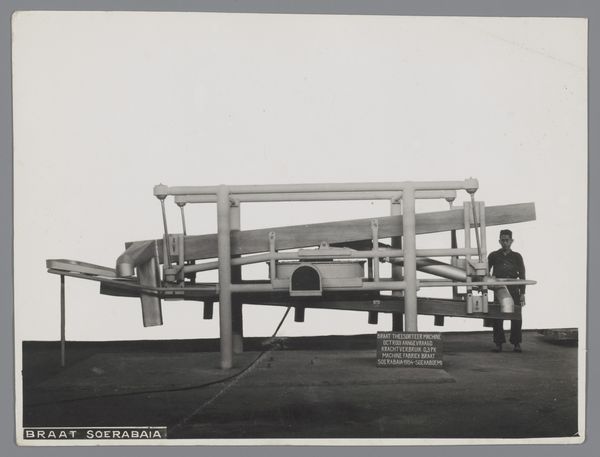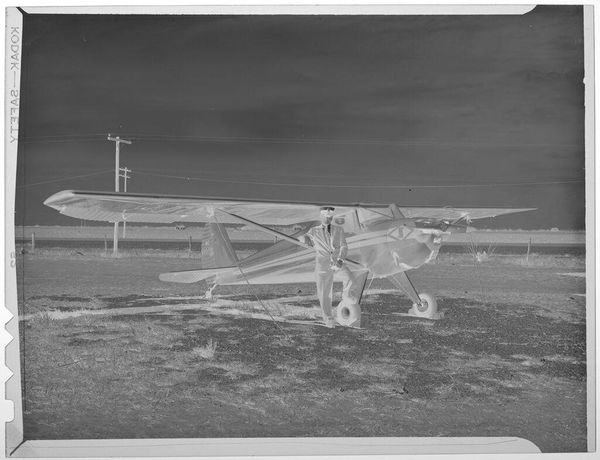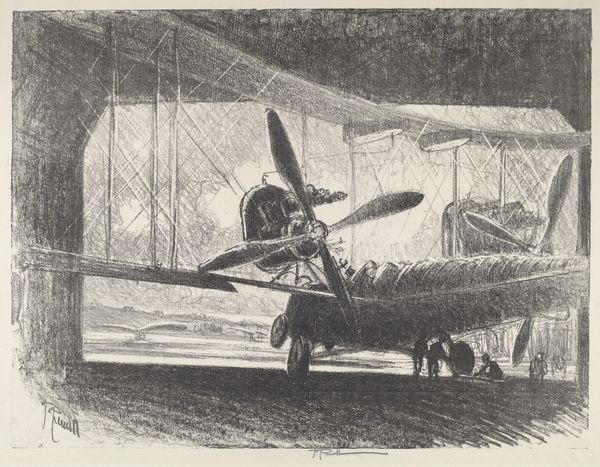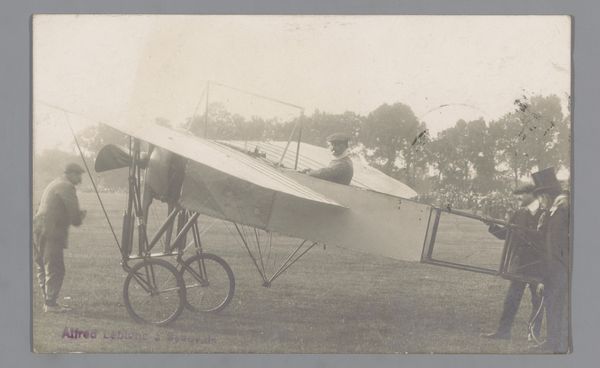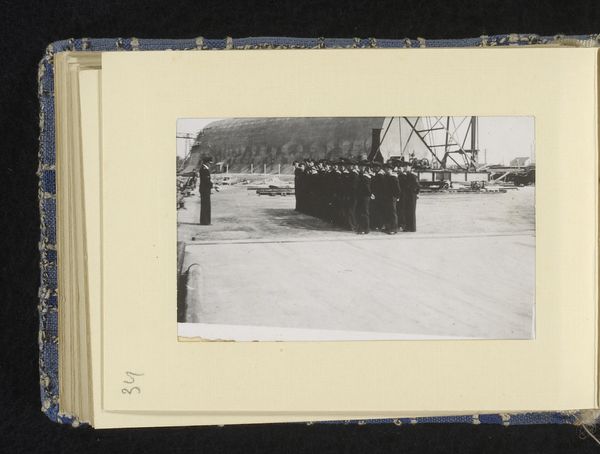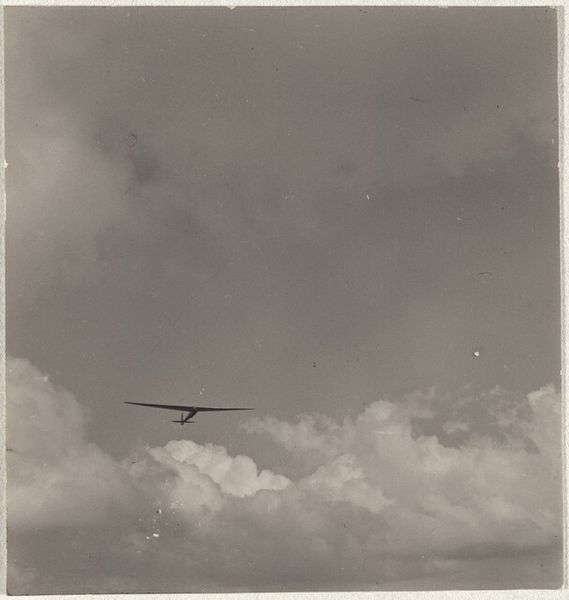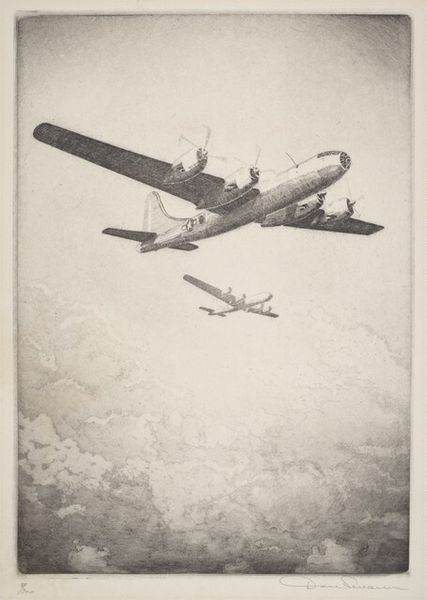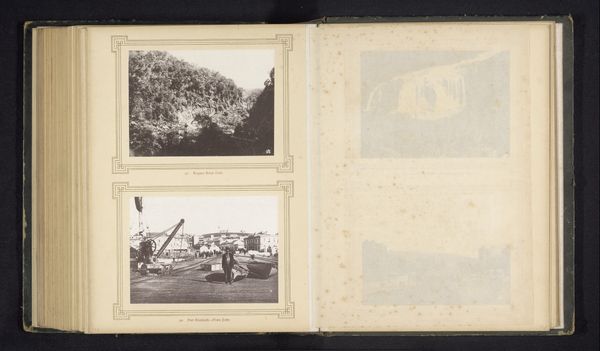
Aankomst van het vliegtuig met de delegatie van gouverneur A.H. Neijs voor een bezoek aan de leprozerie Pelantoengan 1931 - 1935
0:00
0:00
c-print, photography, gelatin-silver-print
#
natural tone
#
landscape
#
c-print
#
photography
#
photojournalism
#
gelatin-silver-print
#
modernism
Dimensions: height 118 mm, width 165 mm
Copyright: Rijks Museum: Open Domain
Curator: This photograph, taken between 1931 and 1935 by Otto Hisgen, captures a momentous occasion: “Aankomst van het vliegtuig met de delegatie van gouverneur A.H. Neijs voor een bezoek aan de leprozerie Pelantoengan.” Editor: The composition is deceptively simple, isn't it? An older plane on a field, but there is something so undeniably melancholy and expectant about it. There’s a certain weight carried within the gelatin-silver print. Curator: Hisgen’s photo offers a compelling intersection of colonialism, modernity, and social welfare of the time. It places the modern marvel of flight against the backdrop of a leper colony, highlighting the role of colonial administration. This juxtaposition immediately draws me to broader power dynamics at play here. Editor: I agree. The photograph offers a window into the complex layers of the Dutch colonial period. The Governor visiting a leper colony under Dutch rule presents loaded imagery. Leprosy often carried strong stigma. Was the governor attempting to show care, or simply exert and reinforce his role? The photo itself seems caught between these tensions. Curator: Absolutely, and beyond that initial framing, think about the ethics of visibility and representation at play. What impact would such an image have on those living in the leper colony? Did it aim to generate support, or to otherise? What are the politics behind turning the inhabitants of the leprosarium into subjects to be viewed? Editor: Considering it’s photojournalism, did Hisgen consider the inherent power he, too, had behind the camera? His position certainly shaped what narrative this image conveyed, the legacy it’s since left. Curator: It's precisely these ethical considerations and complex histories that compel me. Hisgen’s photograph serves as a potent visual testament to the period, inviting us to reflect upon the enduring legacies of colonialism and how images shape collective understanding. Editor: This image reminds us that progress is often unevenly distributed. And visual archives require cautious reading, especially from periods steeped in exploitation. What responsibility do we have to these narratives, today?
Comments
No comments
Be the first to comment and join the conversation on the ultimate creative platform.
